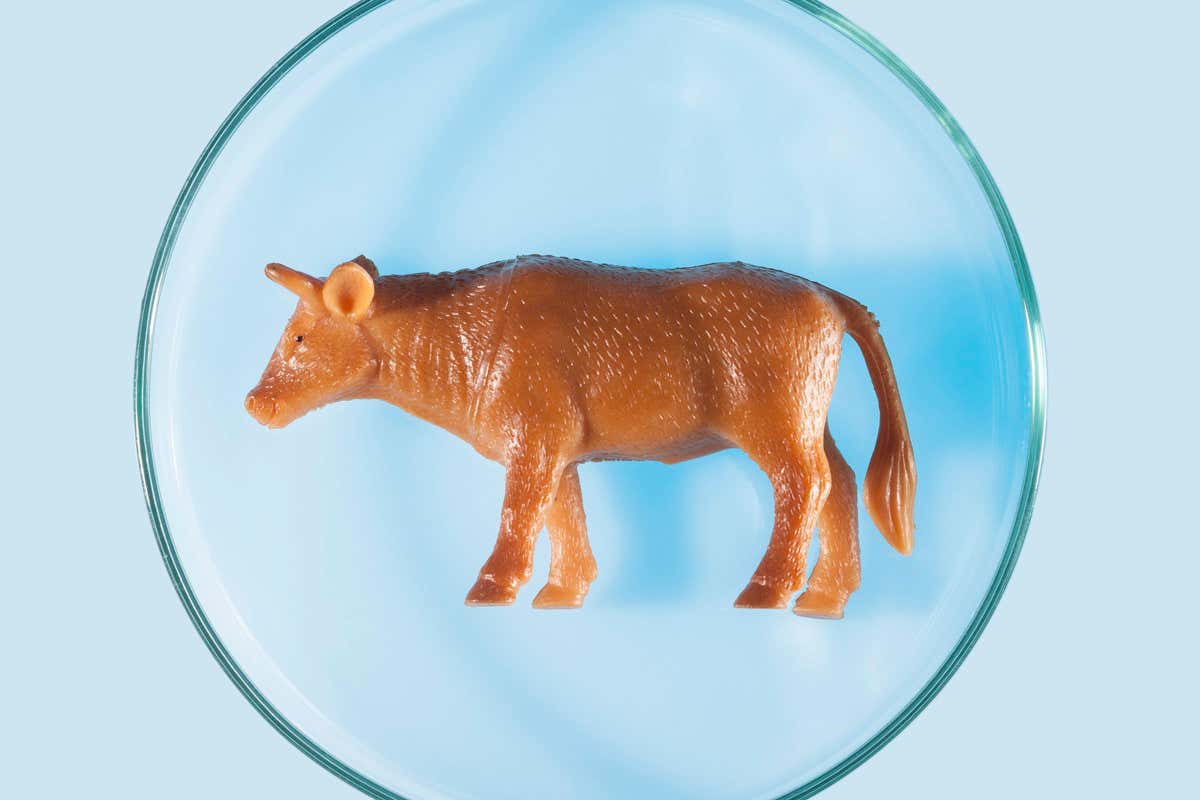
Meat that can be produced in a lab, without need for animals or farms

Cristina Pedrazzini/Science Photo Library/Getty
Thanks to advances in biotechnology, meat can now be produced without need for animals or farms. Although this cultured meat isn’t commercially available today, it will be arriving on our plates within the next decade.
Lab-grown muscle tissue is produced from animal stem cells. A culture of these cells is bathed in nutrients and growth factors, along with an edible scaffold to support the development of 3D structures. When they grow and proliferate the cells form fibres of muscle tissue. This can then be made into foods such as burgers and sausages.
The field began in the 1990s, but really took off in 2013 when a patty composed of lab-grown cow muscle fibres was eaten live at a press conference (though this burger took three months to grow at a cost of around $250,000). Since then companies have sprung up all over the world to develop not only beef, but chicken, shrimp and tuna. Eventually milk, wool and leather will be produced this way too.
Lab-grown meat is almost cruelty-free, as only a biopsy of stem cells is needed to start the process. Many of the harmful environmental effects of farming – water use, pollution and land use – are reduced or eliminated when meat is produced in the lab. There is no need for antibiotics either, unlike on farms where these drugs are used to stop the spread of infection and as growth promoters, fuelling resistance to these invaluable medicines.
Advertisement
In theory, the high carbon footprint of farming – especially those from cows and other ruminants – should plummet when animals are removed from the process, though exact figures are hard to come by and much debated.
There are still many hurdles to overcome before lab-grown meat becomes widely available to the public, such as scaling-up production and getting the right taste and texture. The products must also gain approval from regulators that it is fit for human consumption. And these efforts will be all for nothing is consumers won’t actually eat these new products.
The first commercially-available product is likely to be shrimp meat, which is simpler to produce than beef, as it doesn’t require fat or connective tissue.
Globally, consumption of meat is rising, so cultured meat may be the only way to meet the increasing demand.
